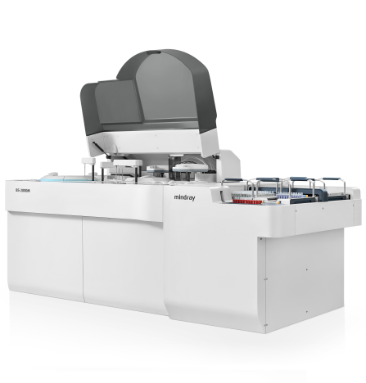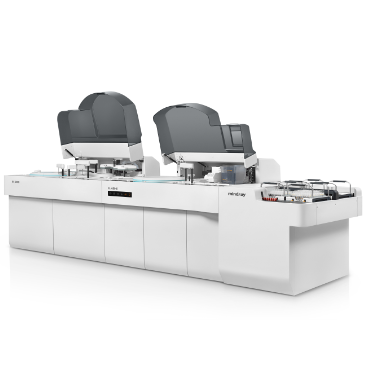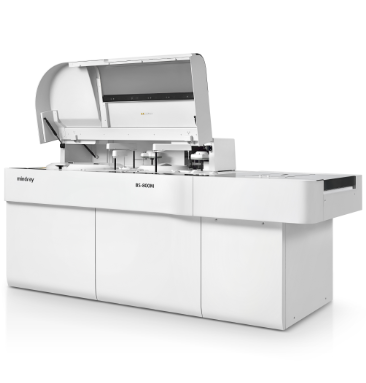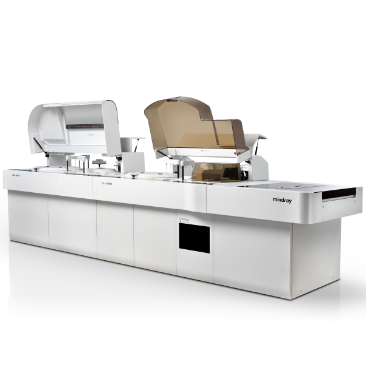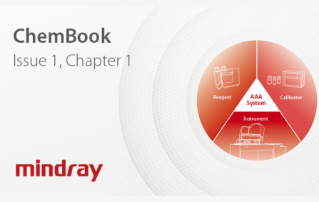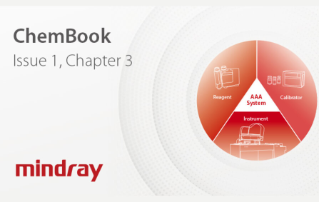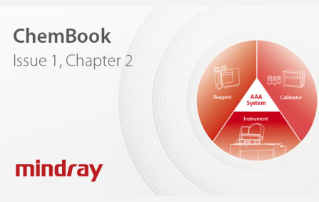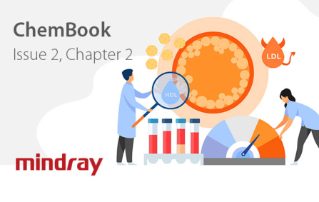Intelligent Identification of Hook Effect to Avoid False Low Result
Bigang Zhou; Hu Wang; Nancy Ji 2021-01-08
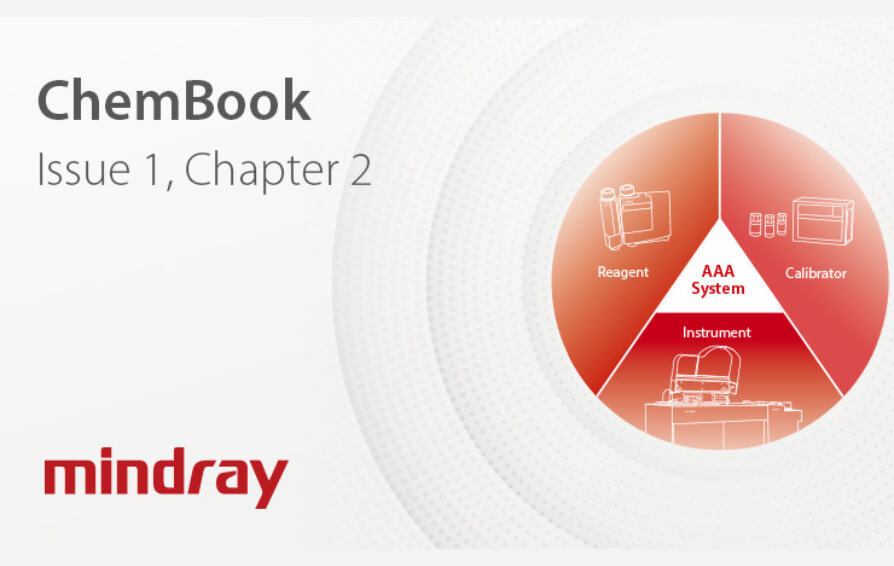
A bunch of clinical biochemistry items are tested by immunoturbidimetric method which measures the turbidity of an immune complex formed from antibody-antigen reaction. It is inevitable that there will be Hook effect created in an antigen-antibody reaction when concentration of analyte (antigen) begins to exceed amount of antibody present in reagent. If not well treated as to this condition, wrong reading results may be obtained. This short case-based article aims to get a closer look at how modern biochemical analysis technology effectively avoid the false result caused by Hook effect.
A 60-year-old female patient received a routine urinalysis on chemistry test paper and a microalbumin (mALB) urine test on chemistry analyzer. The urine paper test showed a high level of protein in urine (3+) with an estimated concentration of more than 300 mg/dl, while the biochemical test for mALB obtained a value of 34.62 mg/dl. There is a significant difference between the two results. Is the result of urine paper test abnormal or is there something wrong with urine biochemical results?
The quality control for qualitative urine paper test and mALB urine chemistry test on that day received a re-check, and the quality control of both two methods were normal. There was a “PRO” flag (Hook effect alarm) for the mALB first measuring result and the reaction curve was abnormal. Then the lab technician rerun the sample after diluting 20 times and got the result 847.7 mg/dL; but there was still an alarm flag, “RRN” flag which indicated that the sample reaction degree was exceeded the highest level calibrator reaction degree. Subsequently, the mALB result 1082.8 mg/dL was obtained after diluting 30 times, and there was no alarm. The evidently big difference between the initial result and later test results after dilution, and along with the low serum Alb result (15.1 g/L) and clinical diagnosis of nephrotic syndrome, can sufficiently prove that the initial chemistry test result for mALB (34.62 mg/dL) was wrong.

Urine mALB is one of the sensitive and reliable index to detect kidney dysfunction in the early stage. Continuous monitoring of mALB level presents important clinical significance for screening of early kidney injury, early therapeutic intervention and prognosis evaluation of a nephropathy. Accurate test results from laboratories are of great benefit for clinical diagnosis and treatment. So how to avoid false low results similar to this case? In order to improve the accuracy of clinical biochemical assay, two dimensions should be considered, that is, optimization of reagent reaction system for extending reagent linearity, and integration of measurement systems for improving identification ability of abnormal test results.
What is Hook Effect?
Hook effect can occur when presenting inappropriate ratio of antigen to antibody and bring falsely low results. The numbers of antigen-antibody complexes formed by two samples with vastly different concentrations could be equal, which contributes the error of the result. In this case, the hooked result occurred in mALB urine test.
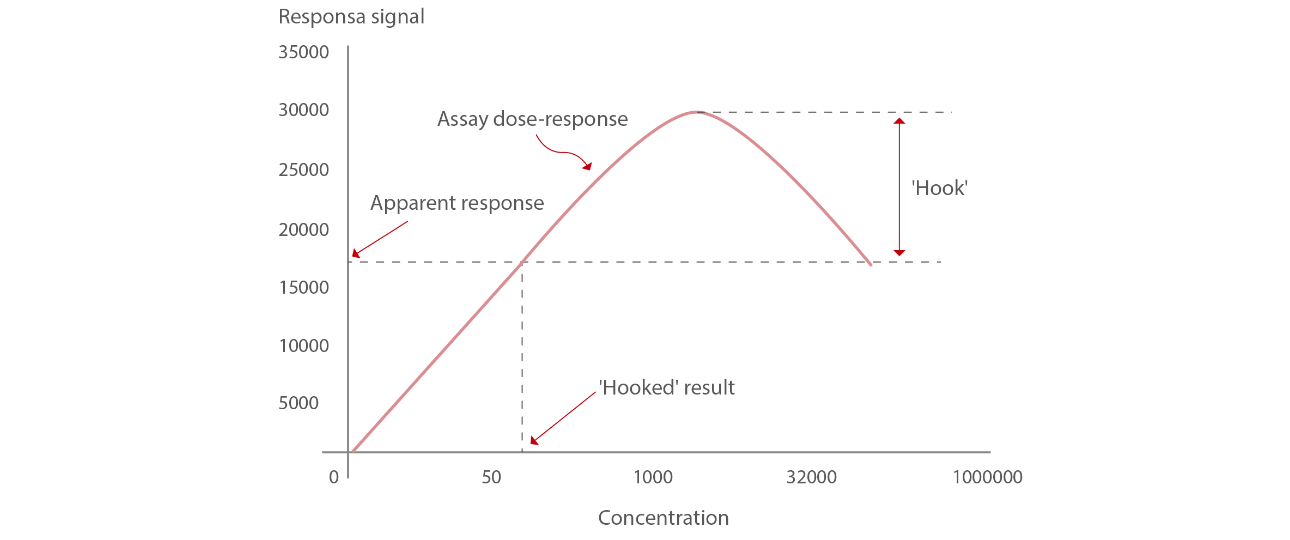
How to Identify Hook Effect?
Special attention should be paid to the abnormality identification function as to modern chemistry analyzers. Currently, Mindray's integrated AAA chemistry testing system has built many powerful testing database in the software (For example reagent application parameter, reagent linear range and reaction check rule, rerun rule, etc.). Figure 2 shows the linearity range and Hook effect check rule for mALB item. The intelligent algorithm of Mindray AAA close chemistry system can provide automatic identification and alarming of Hook effect, thus improving the accuracy of test results.
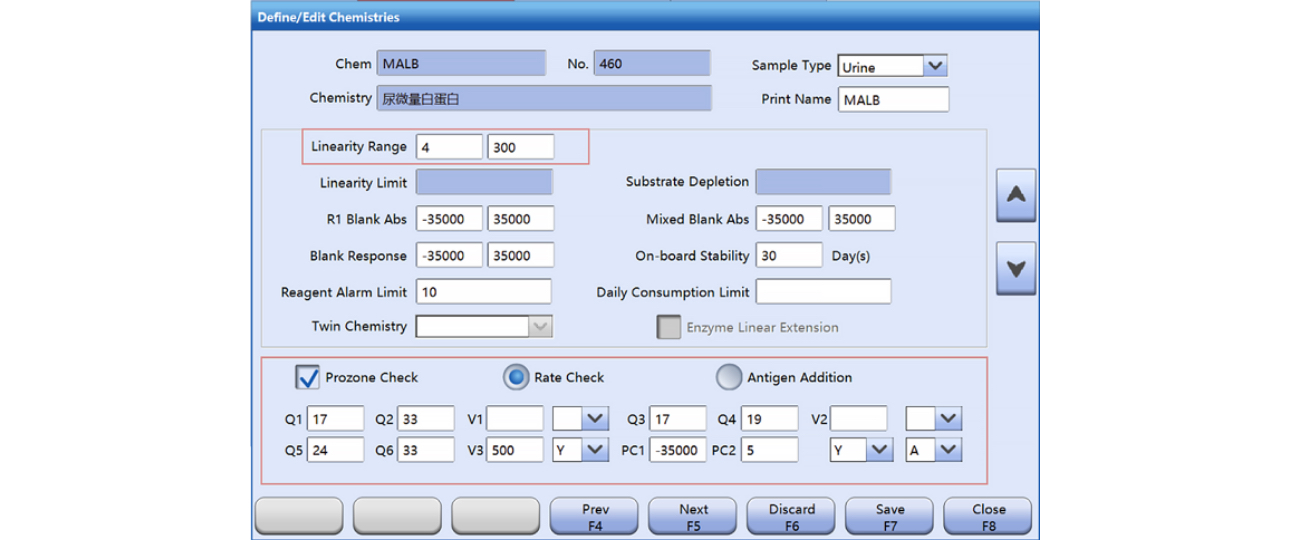
Let’ s look at how does Mindray chemistry system help the lab provide more reliable result for mALB test. If the measuring result is higher than Mindray reagent linearity upper limit 300 mg/L, then the software will give a “>” flag, and trigger a dilution and rerun. If the measuring result is lower than linearity upper limit, the software will check if the result is true or false low result according to the inbuilt pre-zone check rule. If the software judge this is a false low result, it will give a “PRO” flag, then subsequently trigger a default 20 times dilution and rerun. The reaction curve check-up function and intelligent flag alarm function can bring more reliable results, and the auto-dilution can largely bring less manual operation and longer walk-away time.
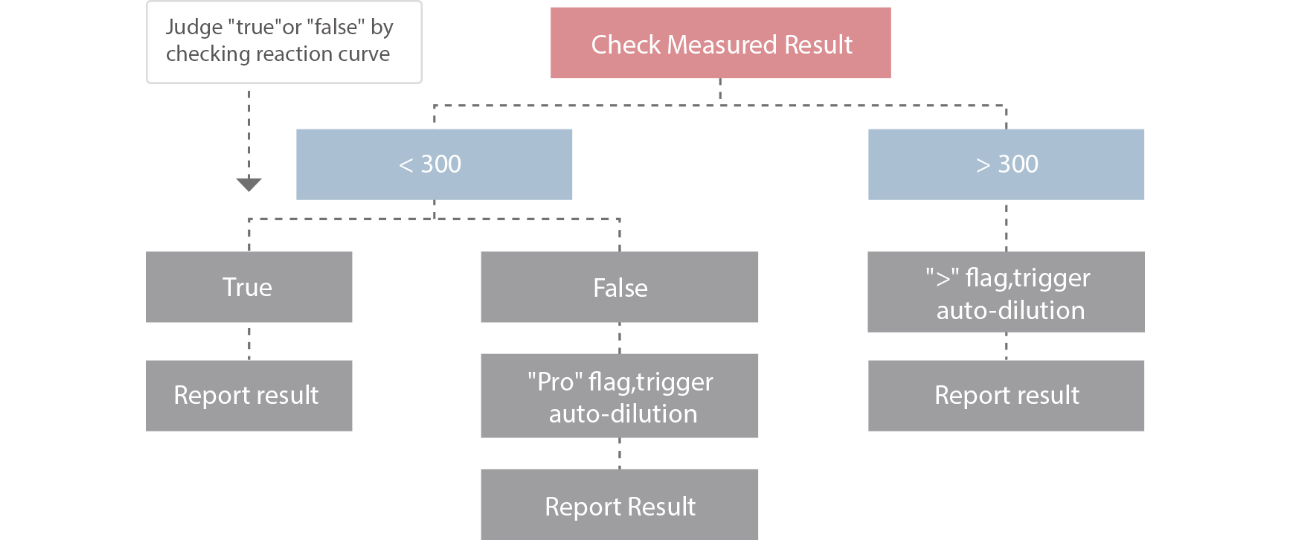
A series of refined parameters built into the system, thus make the system more intelligent and more efficient. It can improve system’ s ability to support clinical diagnosis and treatment, especially the identification ability of abnormal results of high-concentration samples. So the integrated AAA chemistry system can greatly improve the laboratory efficiency, shorten the TAT time, reduce potential risk of errors and increase both clinical and patient satisfaction.
